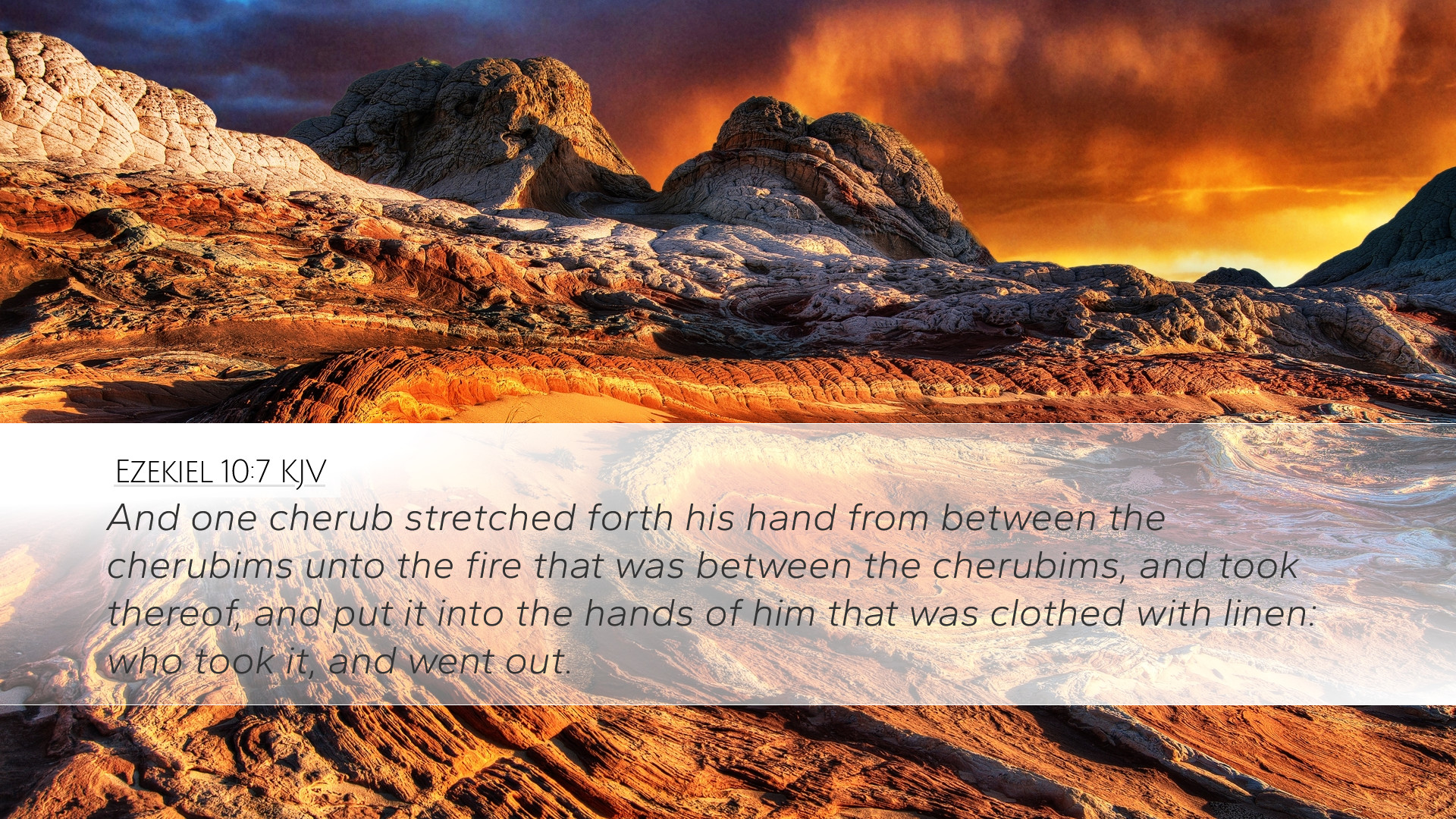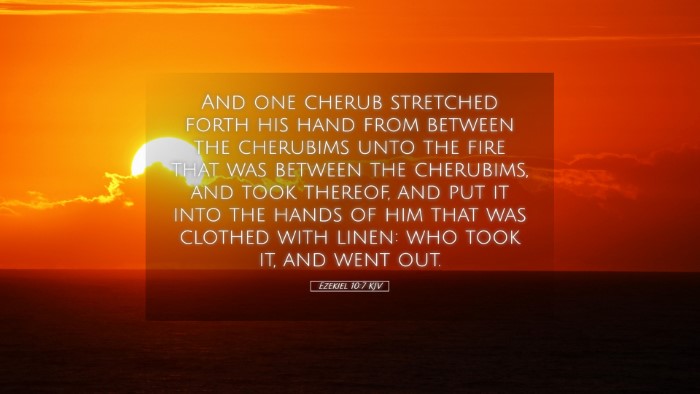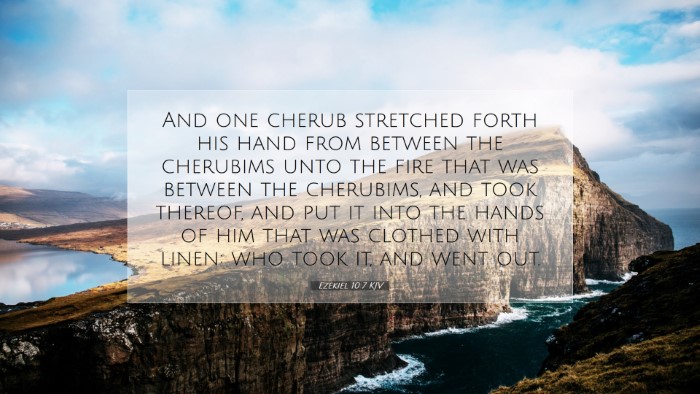Ezekiel 10:7 Commentary
Bible Verse: "And one cherub stretched out his hand from between the cherubim unto the fire that was between the cherubim, and took therefrom, and put it into the hands of him that was clothed with linen: who took it, and went out."
Introduction
This verse appears within a profound prophetic vision granted to Ezekiel during a period of intense turbulence and divine revelation. In this passage, the actions of the cherubim signal critical theological themes concerning God's glory, judgment, and the role of intermediaries in the divine economy. The insights garnered from public domain commentaries such as those by Matthew Henry, Albert Barnes, and Adam Clarke yield a rich tapestry of understanding necessary for profound theological contemplation.
Contextual Analysis
The vision of the cherubim is a continuation of Ezekiel's remarkable prophetic insights into the temple and the divine presence. Ezekiel is observing the glory of the Lord, departing from Jerusalem, which highlights the gravity of Israel's sins and the severity of impending judgment.
Historical Context
Ezekiel's prophecies were delivered during the Babylonian exile. The temple had been a central aspect of Jewish worship, and God's glory dwelling therein represented the ultimate assurance of His presence among His people. The actions of the cherubim, especially in this verse, are laden with significance as they illustrate the relationship between the heavenly realm and earthly worship.
Theological Insights
- Role of the Cherubim: Cherubim are often viewed as guardians of God's holiness. In this instance, they act as agents of divine action, illustrating how God utilizes His creation to execute His will.
- Fire as Symbolism: The fire represents divine judgment and purification. The act of taking fire from between the cherubim emphasizes the seriousness of the impending judgment upon Judah and Jerusalem.
- Clothed in Linen: The figure clad in linen symbolizes purity and a priestly function. This suggests an intercessory role, alluding to the mediation between the divine host and humanity.
Commentary from Matthew Henry
Matthew Henry notes that the stretching out of a hand signifies action taken in obedience to God's commands. The cherubim, as his servants, demonstrate both readiness and authority. Henry discusses how this imagery portrays God's willingness to purify His people by withdrawing His glory due to their transgressions.
Commentary from Albert Barnes
Albert Barnes elaborates on the function of the cherubim in this context. He interprets their actions as symbolic of God's providence in administering justice. Barnes emphasizes that the act of taking fire signifies the transmission of judgment—a pivotal point of divine interaction where holiness meets human disobedience.
Commentary from Adam Clarke
Adam Clarke amplifies the metaphorical use of fire in his remarks. He delves into interpretations of the fire representing either divine wrath or purifying heat. Clarke suggests that this divine act illustrates God's unwillingness to be wholly absent, even as He departs from unfaithful Israel. Clarke's insights underline God's ultimate hope for restoration amidst rightful judgment.
Practical Applications for Pastors and Theologians
Understanding the context and implications of Ezekiel 10:7 serves various practical purposes for spiritual leaders and scholars:
- Understanding Divine Judgment: This passage acts as a compelling reminder of God’s holiness and justice, urging pastors to address the seriousness of sin within congregations.
- The Role of Intercession: The figure clothed in linen serves as a model for intercessory prayer, highlighting the church's role in bridging the gap between God and humanity.
- Encouragement of Purification: The fire motif encourages personal and corporate reflection on the need for spiritual purity and the cleansing power of God.
Conclusion
Ezekiel 10:7 captures a significant moment of divine revelation that speaks volumes about the nature of God, the severity of sin, and the possibilities of redemption. By examining this text through the lenses provided by Matthew Henry, Albert Barnes, and Adam Clarke, a deeper understanding emerges, inviting readers to engage with the text's timeless truths and its relevance in contemporary ministry and theology.


